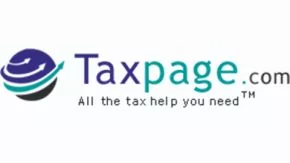- within Tax topic(s)
- with Senior Company Executives, HR and Finance and Tax Executives
- in United States
- with readers working within the Accounting & Consultancy and Property industries
Understanding the Taxation of RESP Withdrawals
A Registered Education Savings Plan (RESP) is a cornerstone of educational financial planning in Canada. It allows families to save for post-secondary education through personal contributions, government grants, and tax-deferred investment growth. However, many Canadians remain uncertain about how withdrawals are taxed. This article provides a comprehensive overview of RESP withdrawal taxation and general tax planning strategies to minimize exposure.
RESP Withdrawals: Tax-Free vs. Taxable Payments
Withdrawals from an RESP fall into two primary categories: Post-Secondary Education (PSE) Withdrawals and Educational Assistance Payments (EAPs). Understanding the distinction between these two is essential for tax planning.
Post-Secondary Education (PSE) Withdrawals
PSE withdrawals represent original contributions made by the subscriber or eligible contributors. These amounts are not taxable since contributions were made with after-tax income. Subscribers can withdraw these funds at any time, for any purpose, without restrictions or tax consequences.
Educational Assistance Payments (EAPs)
EAPs are composed of government grants such as the Canada Education Savings Grant (CESG) and the Canada Learning Bond (CLB), as well as investment income earned within the RESP. These payments are taxable in the hands of the beneficiary. The beneficiary receives a T4A slip for all EAPs, and the income must be reported on their return. To minimize taxes, students should claim all education-related credits, avoid large withdrawals, and coordinate EAPs during low-income years.
Unused RESP Funds: Taxation and Strategic Options
If a beneficiary does not pursue post-secondary education, several options exist: transferring funds to an RRSP, an RDSP, or a sibling's RESP, or donating to a Canadian educational institution. If withdrawn as Accumulated Income Payments (AIPs), the subscriber pays tax at their marginal rate plus a 20% penalty unless transferred to an RRSP or RDSP.
Why Consultation with a Canadian Tax Lawyer Is Essential
Before initiating RESP withdrawals or closing a plan, consulting an experienced Canadian tax lawyer ensures efficient structuring and CRA compliance. This is especially vital when the subscriber or beneficiary is a non-resident, as residency status affects taxation of both Educational Assistance Payments and Accumulated Income Payments.
Pro Tax Tips from a Canadian Tax Lawyer
- Coordinate EAP withdrawals with the student's tax bracket.
- Track CESG and CLB limits to avoid repayment.
- Consider RRSP room early for possible AIP transfers.
- Review residency implications before closing the RESP.
- Seek professional legal advice before repurposing RESP funds.
Frequently Asked Questions (FAQs)
What are the two main types of RESP withdrawals?
PSE withdrawals are tax-free returns of contributions, while EAPs are taxable to the beneficiary.
How are Accumulated Income Payments (AIPs) taxed?
AIPs are taxed at the subscriber's marginal rate plus a 20% penalty unless transferred to an RRSP or RDSP.
Can RESP funds be withdrawn if the beneficiary does not attend post-secondary education?
Yes, but grants must be repaid, and investment income may be taxable unless rolled over or donated.
How can students minimize tax on EAP withdrawals?
By claiming credits, spreading withdrawals, and avoiding lump-sum payments in high-income periods.
The content of this article is intended to provide a general guide to the subject matter. Specialist advice should be sought about your specific circumstances.


